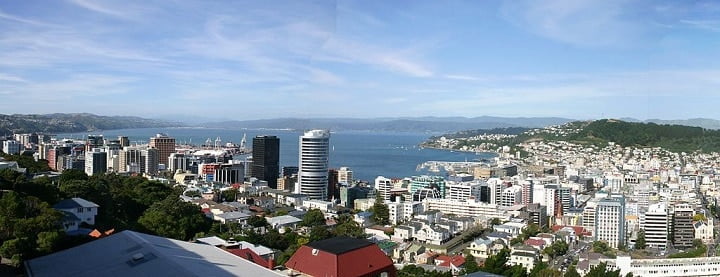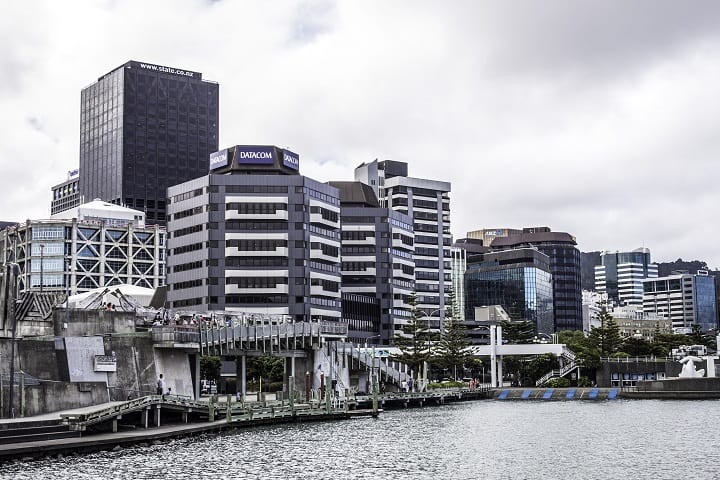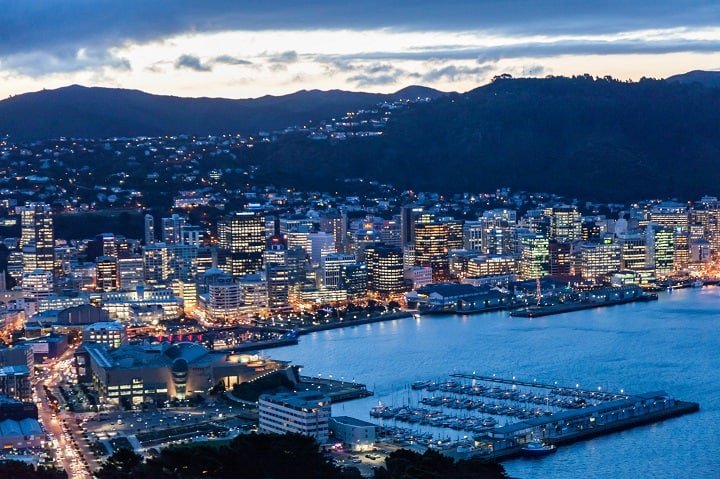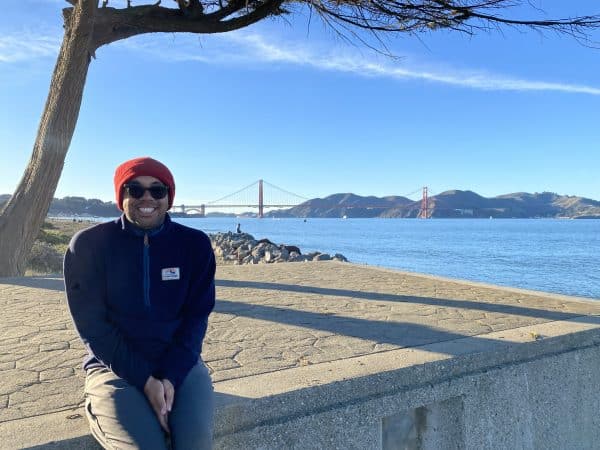Cultural resilience in the capital
06/07/2018
By Julia Becker
Wellington has long been regarded as a city vulnerable to natural hazards. As a nation, we have generally expected that our capital is likely to experience a big quake, sooner rather than later. Previous surveys indicate that over 95% of Wellingtonians are aware of the earthquake risk in Wellington. However, despite this being the case, knowledge of the earthquake hazard doesn’t always translate into preparedness and resilience in local residents.

Researchers in Resilience to Nature’s Challenges Cultural Resilience programme have been exploring the resilience of Wellingtonians, and their knowledge of, and response to natural hazards.
The Christchurch quake came as a shock to many Cantabrians, who didn’t expect to be affected by an earthquake, and surprised Wellington residents who suspected that they would be the ones under which the ground was moving. Wellingtonians may have breathed a sigh of relief in 2010, but it was a different story when the 2016 Kaikōura quake hit. The 7.8 magnitude earthquake, centred 60kms south-west of Kaikōura was felt throughout the Wellington region, causing damage to buildings and infrastructure. This served as a wake-up call for many, and provided researchers with an opportunity to find out how the event affected residents, and how they responded.
The Cultural Resilience team has conducted several surveys in the Wellington region, aimed at enhancing our understanding of disaster readiness. Two of these took place following the Kaikōura quake. First, residents of Petone and Eastbourne were surveyed to understand people’s response to the Kaikōura earthquake and tsunami. They discovered that many people are confused about what to do following a long or strong earthquake (which poses a tsunami risk). 69% of residents of two Lower Hutt suburbs evacuated after the quake, but most of them took too long, or evacuated inappropriately. Only a third of those who evacuated did so within the recommended 10-minute window, with others taking anywhere from 10 minutes to over three hours to seek safer ground. Respondents also reported evacuating, and then returning home only to evacuate again. This indicates that people were confused about whether they were at risk from a tsunami and what they should be doing to respond. In addition, 64% of respondents evacuated by car, which is not recommended as it causes congestion, stopping people from reaching safe ground quickly. Further results from the study are available online here.
The second survey conducted after the Kaikōura quake focused on apartment dwellers in Wellington’s CBD, and the unique challenges they face following an emergency. The team wanted to know how residents of small, high-rise apartments were impacted by, and responded to, the quake in terms of evacuation, preparedness and wellbeing. They found that many people (43%) didn’t evacuate for a tsunami, and many of those who did relied on looking to what others in the building were doing before deciding what they should do. People also evacuated for various reasons that weren’t related to tsunami risk, such as fear, the need to be with other people and because of damage to their apartment buildings. Most people stayed within the Wellington region after evacuating (96%), with 80% staying within the city itself. This has implications for planning for a future major event, in terms of where displaced people might be accommodated in the region.

The Kaikōura quake motivated apartment dwellers to become more prepared, with many more likely to undertake easier preparedness actions like collecting survival items after the quake. However, respondents weren’t as likely to participate in complex actions like securing furniture or attending community-based activities. Those renting their apartment noted that securing furniture was difficult as rental contracts generally didn’t allow tenants to put holes in walls. Apartment dwellers in general also said that lack of space was an issue and they didn’t have many places to put survival items. The results from this survey will be published in the Australasian Journal of Disaster and Trauma Studies later this year.
A third Wellington-based study explored the development of resilience indicators from a local social perspective. Resilience indicators are key factors that can be used to measure the resilience of a community. For example, the diversity of food supply in an area might be one indicator, while the amount of connection, coordination and cooperation within and between communities might be another. An understanding of how a community is performing across a range of resilience indicators gives us a clearer picture of its overall resilience. The study looked at how local resilience indicators and frameworks might be developed using the perspectives of stakeholders from urban neighbourhoods, with a focus on Wellington, New Zealand, and San Francisco in the USA. Researchers talked with community stakeholders to understand their values, their perspectives on the concept of resilience, and the essential elements that they believed would contribute to the resiliency of their neighbourhoods. The study found that stakeholders from both cities shared common values and perceived characteristics of disaster resilience. For example, they both valued the importance of neighbourhood identities and social connections, and considered disaster resilience to be the continued wellbeing of residents within a functioning community.
From this study a framework for understanding how to measure neighbourhood-level resilience has been developed. It includes individual/psychological, socio-cultural, economic, infrastructural/built, and institutional/governance dimensions of disaster resilience. Building upon this framework, the Cultural Resilience team are currently collaborating with Resilience Challenge Trajectories programme researchers to take this work further. They’re working with Wellington Region Emergency Management Office (WREMO) to develop resilient indicators for the Emergency Management Group Plan. Such indicators may incorporate the neighbourhood-level indicators developed though this research, as well as suburb-level and regional-level indicators.

The final piece of Wellington-based work that the team has undertaken, has involved investigating whether people’s opinions about earthquake strengthening are influenced by the opinions of others. Being a city at risk from earthquakes, strengthening of vulnerable buildings is a hot topic of debate, and often disagreement. We know that seeing someone pick up litter makes you more likely to pick up litter yourself, so we wanted to investigate if that was also the case with earthquake strengthening. One of our key questions was, would knowing if others thought earthquake strengthening was a good idea make you think it was a good idea too? The result was yes; respondents were more likely to approve of earthquake strengthening legislation if they were told that most Wellingtonians approved of it too. This provides a way for groups like the government or councils to increase public support for new initiatives such as earthquake strengthening legislation.
These studies allow us to better understand how resilient Wellington locals are, where potential problems might lie and how we might be able to increase resilience. They provide a good basis for developing resilience planning nationwide, and enhancing relevant policy and legislation, so that we can be better prepared when the next big one hits.



